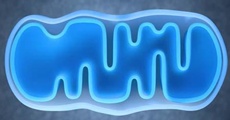New gene mutation will help better diagnosis of myopathy
02 Jan 2014
A new gene mutation which will help doctors give a more accurate diagnosis of a type of brain and muscle disease in children has been discovered for the first time by University of Leeds experts.
 Mitochondrial myopathy, as it is known, causes muscle weakness, movement problems and learning difficulties. For the first time, mutations in a particular gene, MICU1, have been linked to myopathy. The discovery gives a better understanding of the genetic causes of the condition.
Mitochondrial myopathy, as it is known, causes muscle weakness, movement problems and learning difficulties. For the first time, mutations in a particular gene, MICU1, have been linked to myopathy. The discovery gives a better understanding of the genetic causes of the condition.
Working with colleagues from University College London and Great Ormond Street Hospital, as well as colleagues from the Netherlands and Italy, Dr Eamonn Sheridan's team identified two mutations in the gene using a technique called exome sequencing – an alternative to whole genome sequencing.
Mitochondria are the batteries of the body's cells where energy is produced. They are found in large numbers in nerve and muscle cells, which have high energy demands. To function properly, mitochondria need a certain amount of calcium. If calcium levels are either too high or too low, they stop working properly.
MICU1 carries instructions for a protein which is essential for mitochondrial function.
Researchers found that mutations in the MICU1 gene caused less protein to be produced, which led to an increase in calcium in the mitochondria. This resulted in damage to the mitochondria and changes in calcium levels in the rest of the cell.
''This research will enable clinicians to give individuals a more precise diagnosis, and information on how the condition might progress, as well as helping families to make better-informed decisions,'' says Dr Sheridan, of the Institute of Biomedical and Clinical Sciences at the University of Leeds.
According to Professor Michael Duchen, of University College London, ''Mitochondrial calcium signalling has long been thought to be important in regulating cellular energy supply, and defects in these pathways have been thought to be important in many conditions. However, this is the first time that a human condition has been directly linked to a gene defect in this pathway, so this is very exciting for us.''
Although it is not known precisely how changes in the cell lead to myopathy, the findings will help provide useful information about the causes of myopathy and how to develop future therapies.
The research was funded by the Muscular Dystrophy Campaign and published in the journal Nature Genetics.













.jpg)






.jpg)









